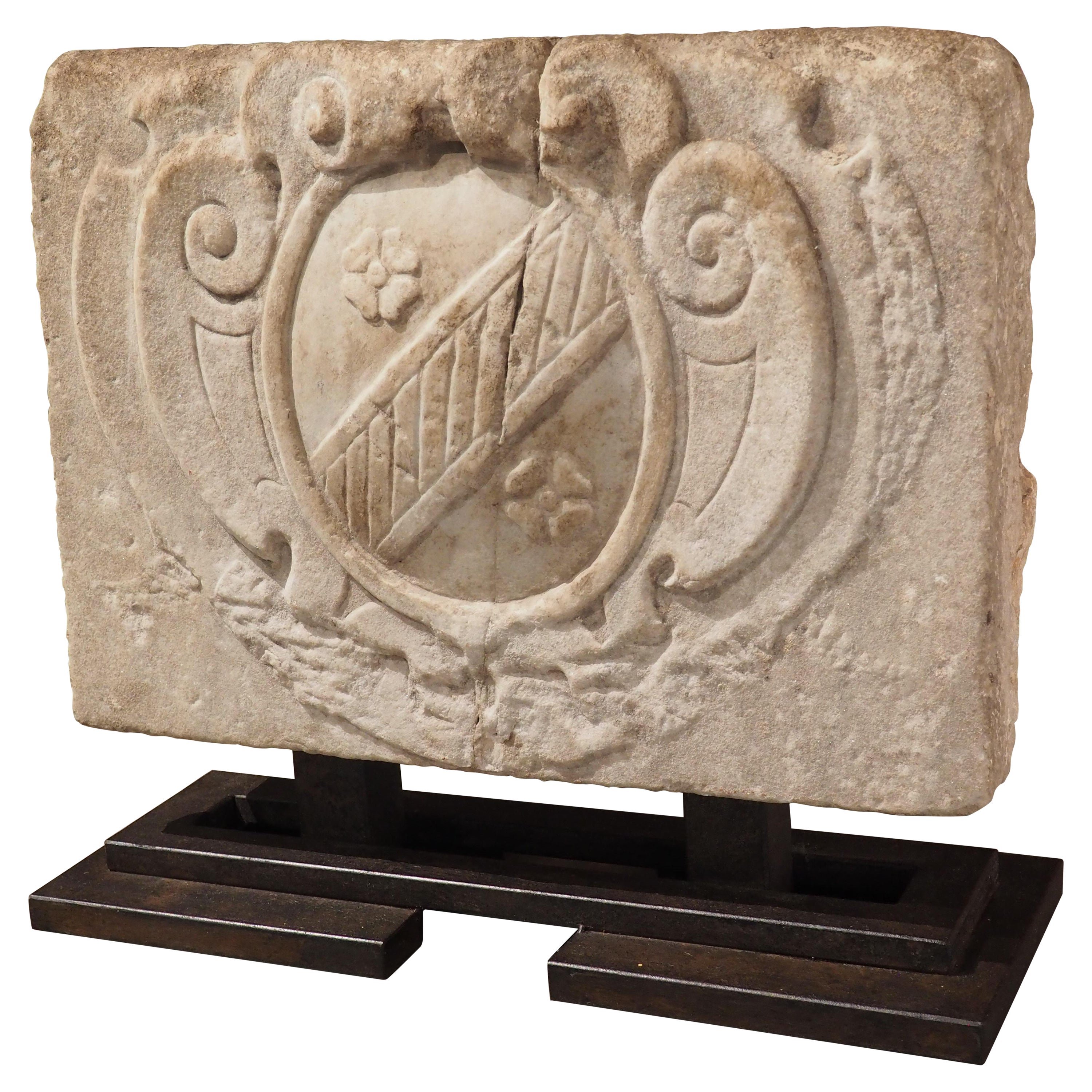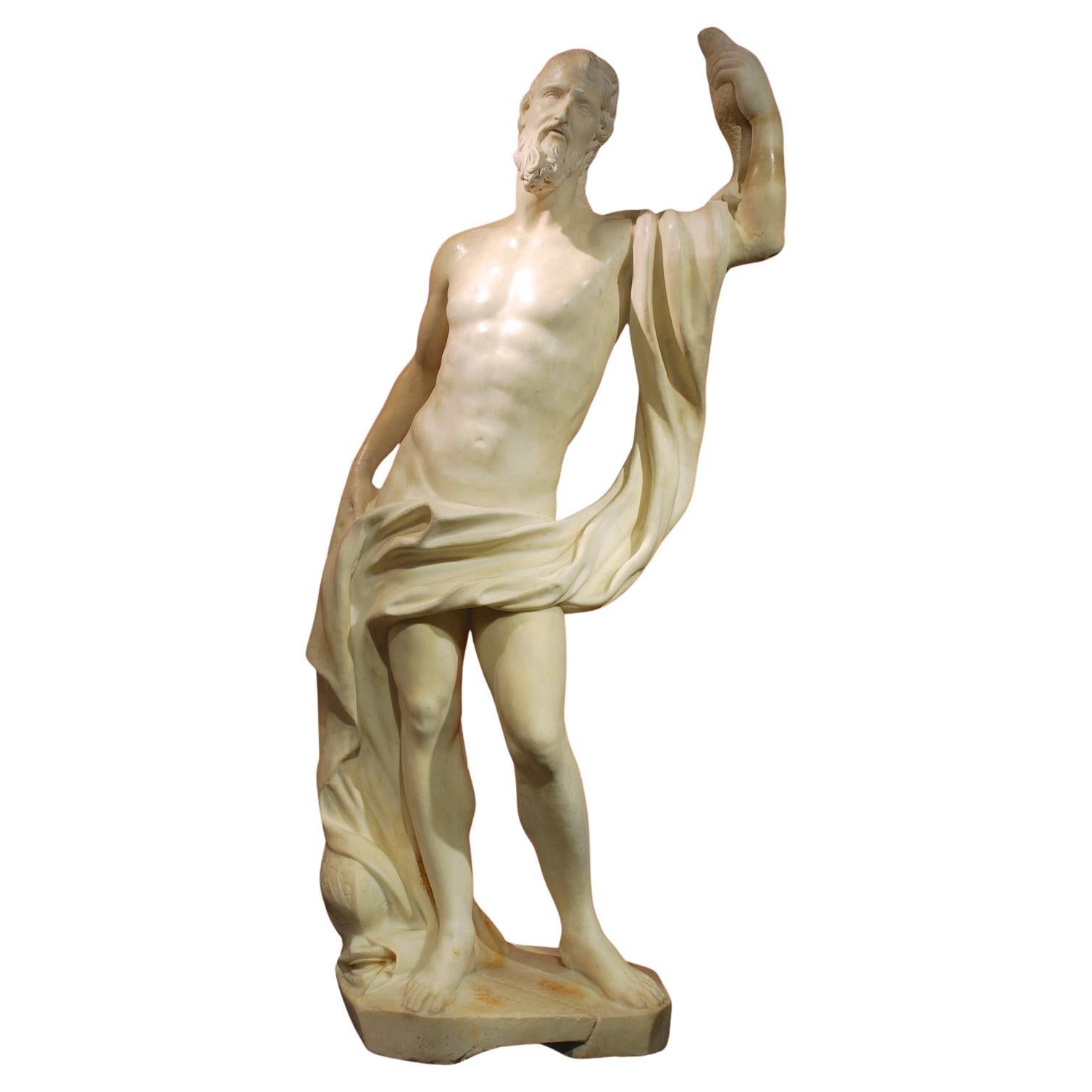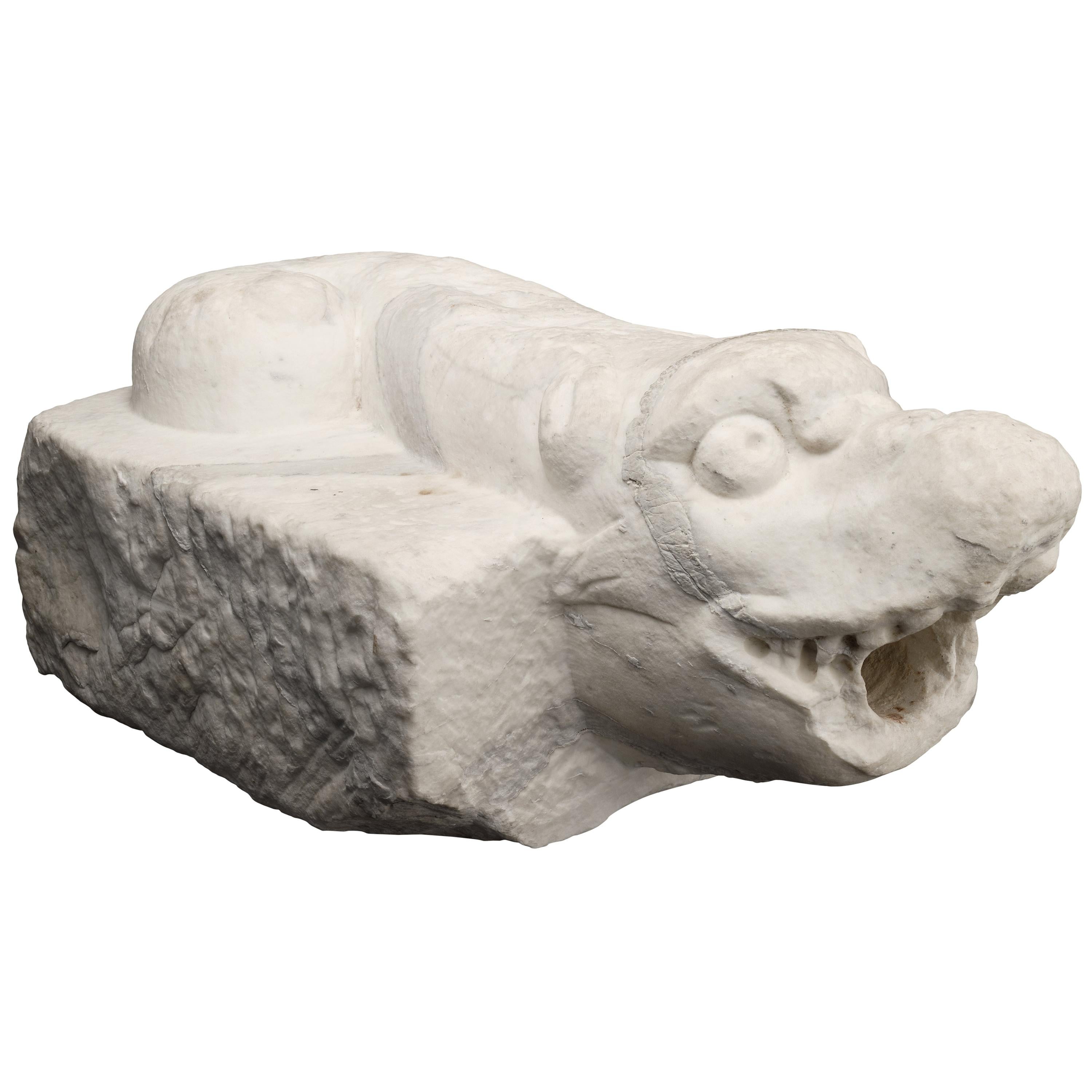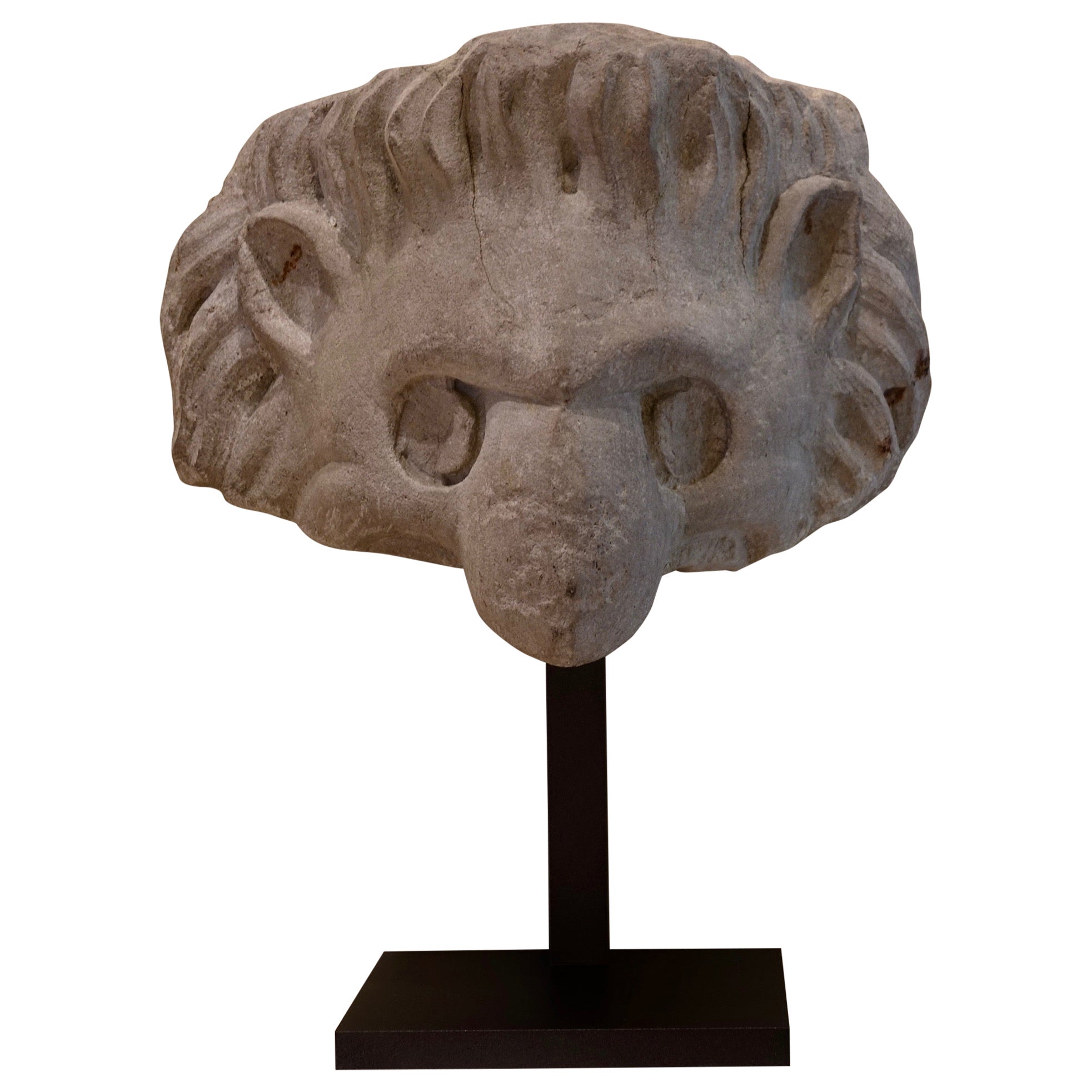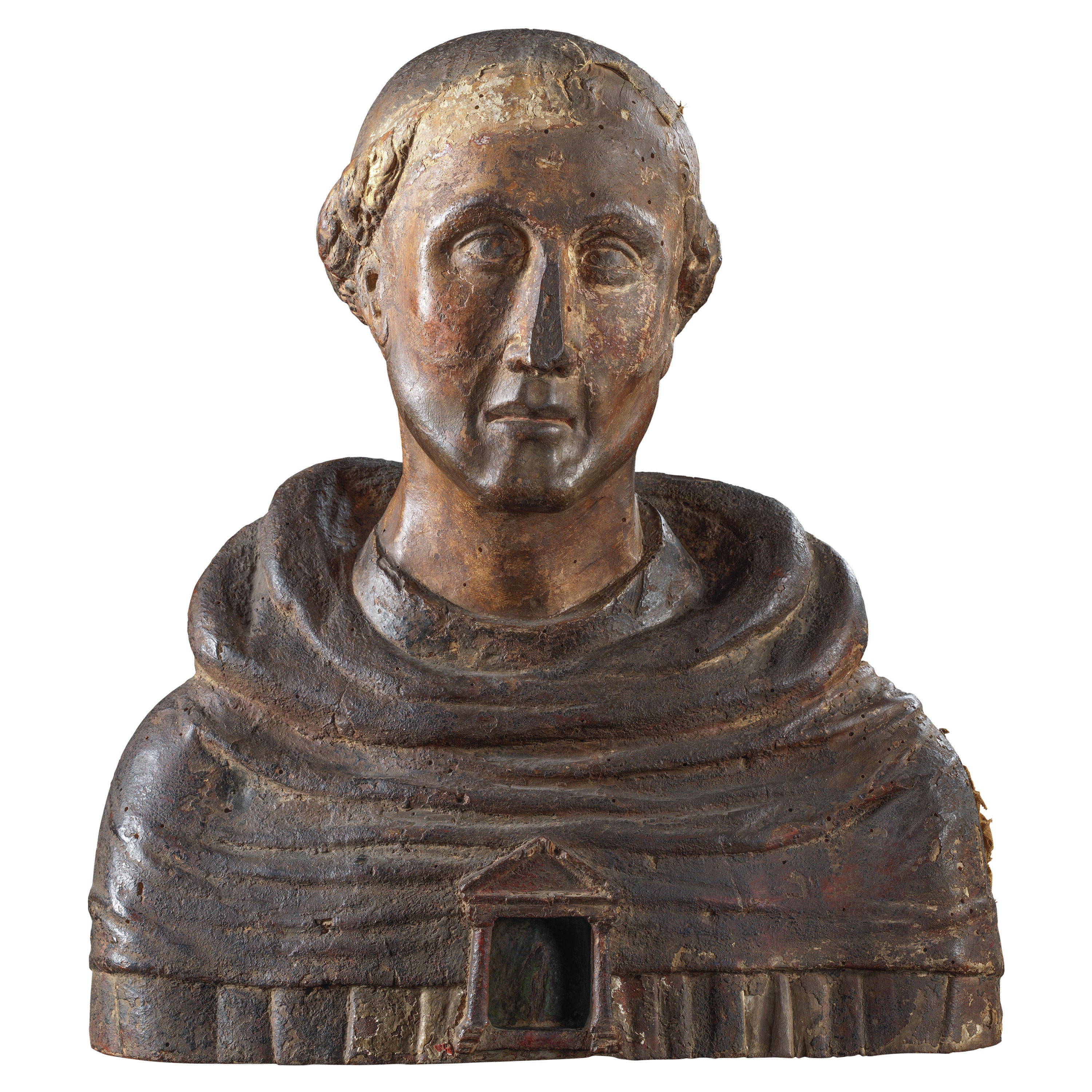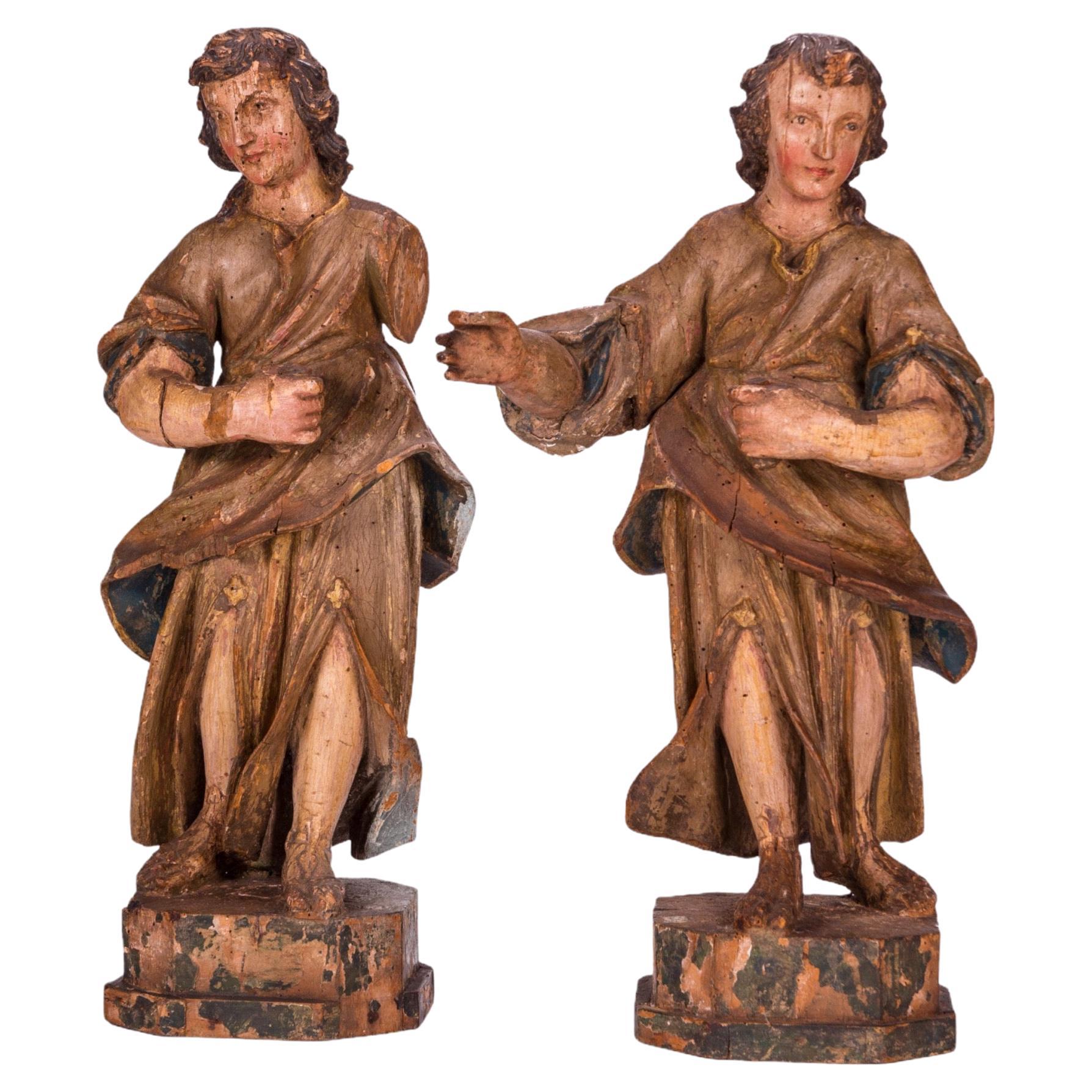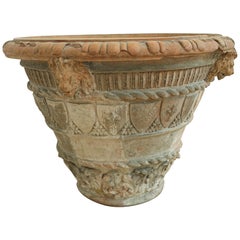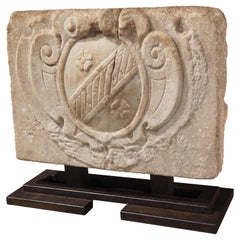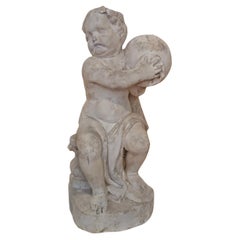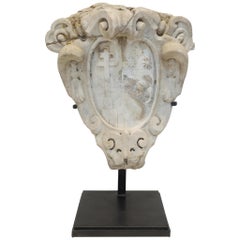
Florentine Marble Stemma 'Cartouche' on Steel Stand-Pucci Family, 16th Century
View Similar Items
Video Loading
Want more images or videos?
Request additional images or videos from the seller
1 of 17
Florentine Marble Stemma 'Cartouche' on Steel Stand-Pucci Family, 16th Century
About the Item
- Dimensions:Height: 26 in (66.04 cm)Width: 10 in (25.4 cm)Depth: 18 in (45.72 cm)
- Style:Renaissance (Of the Period)
- Materials and Techniques:
- Place of Origin:
- Period:
- Date of Manufacture:1500s
- Condition:
- Seller Location:Richmond, VA
- Reference Number:1stDibs: LU5230218798002
About the Seller
5.0
Vetted Seller
These experienced sellers undergo a comprehensive evaluation by our team of in-house experts.
Established in 1991
1stDibs seller since 2020
21 sales on 1stDibs
More From This SellerView All
- 16th Century Late Gothic Limestone GargoyleLocated in Richmond, VAA late Gothic limestone gargoyle water spout. Original iron bracket in central gutter. Stunning hairline cracking in stone due to old age. Perfect o...Category
Antique 15th Century and Earlier French Gothic Architectural Elements
MaterialsLimestone
- Pair of 19th Century Italian Carrara Marble Garden TablesLocated in Richmond, VAA pair of 19th century Italian Carrara marble garden tables with circular tops on baluster column pediments with square plinths. Elegant gadrooning on the central column. The lower c...Category
Antique Early 19th Century Italian Classical Roman Patio and Garden Furn...
MaterialsCarrara Marble
- Spanish Late 18th-Early 19th Century Armorial Jardinière (Pot)Located in Richmond, VAA rare late 18th-early 19th century, large Spanish terracotta armorial jardinière. Decorated with armorial shields and a foliate design. Egg and dart moulding on the rim. Perfect for...Category
Antique Early 19th Century Spanish Planters and Jardinieres
MaterialsTerracotta
- Ottoman Hammered Copper Vessel, 18th CenturyLocated in Richmond, VAAn ottoman hammered copper vessel. Traces of brass banding at shoulder and Arabic inscription at rim, 18th century. Perfect on a dining table or...Category
Antique 18th Century Turkish Baltic Garden Ornaments
MaterialsCopper
- Pair of French Art Nouveau Limestone CapitalsLocated in Richmond, VAThese hand carved capitals show the sinuous organic long lines of Art Nouveau as it starts to transition to Art Deco. The interlocking lotus palmettes are deeply carved with exceptio...Category
Early 20th Century French Art Nouveau Pedestals and Columns
MaterialsLimestone
$6,500 / set - Italian Impruneta Terracotta Planter BoxesLocated in Richmond, VAVintage from the late 20th century. Decorated with festoons and putti. Due to the density of Impruneta Galestro (clay) these pieces are freeze resistant guaranteeing a lifetime of us...Category
Late 20th Century Italian Planters and Jardinieres
MaterialsTerracotta
$1,500 / set
You May Also Like
- Carved and Mounted Marble Stemma Cartouche from Tuscany, Italy, 16th CenturyLocated in Dallas, TXThe carvings of this marble stemma cartouche dates to the 1500’s. Hand-carved in Tuscany, Italy, the marble was mounted onto a geometrically shaped iron stand within the last century...Category
Antique 16th Century Italian Mounted Objects
MaterialsMarble
- 16th CENTURY MARBLE SCULPTURE OF A YOUNG HERCULESLocated in Firenze, FISplendid sculpture in white Carrara marble depicting a young Hercules holding the world. Originally, the work was conceived to be used as a caryatid at the beginning of a sumptuous m...Category
Antique 16th Century Italian Renaissance Figurative Sculptures
MaterialsCarrara Marble
- A 16th century carved marble sculpture of poseidonLocated in London, GBThis fine and imposing sculpture is an excellent example of 16th century Italian craftsmanship. The figure is stood on a raised, shaped rectangular base with a carved "dolphin" at th...Category
Antique 16th Century Italian Renaissance Figurative Sculptures
MaterialsMarble
- Italian Ancient Marble Sculpture Fountain, Late 16th CenturyLocated in Milano, ITSea monster Carrara marble mouth fountain Italy, late 16th century It measures 13.8 x 31.5 x 18.9 in (35 x 80 x 48 cm) State of conservation: some small evident gaps and widespread signs of wear due to outdoor exposure. The gray marks crossing it do not come from restoration, but are rather the natural veins of the marble. This work has some morphological characteristics typically associated with the iconography of the sea monster: an elongated muzzle, sharp teeth, protruding eyes, elongated ears, and a coiled serpent's tail. An in-depth series of studies on artistic depictions of the sea monster attempted to verify how this symbol evolved in antiquity in the European and Mediterranean contexts and how it gradually changed its image and function over time. The iconography itself is mutable and imaginative and its history is rich with cultural and artistic exchange, as well as the overlapping of ideas. This occurred so much that it is difficult to accurately pinpoint the "types" that satisfactorily represent its various developments. However, we can try to summarize the main figures, starting from the biblical Leviathan and the marine creature that swallowed Jonah (in the Christian version, this figure was to become a whale or a "big fish", the “ketos mega”, translation of the Hebrew “dag gadol”). Other specimens ranged from the dragons mentioned in the Iliad (which were winged and had legs) to "ketos” (also from Greek mythology), the terrifying being from whose Latinized name (“cetus”) derives the word "cetacean". See J. Boardman, “Very Like a Whale” - Classical Sea Monsters, in Monsters and Demons in the Ancient and Medieval Worlds, in Papers presented in Honor of Edith Porada, Mainz am Rhein 1987, pp. 73-84). In Italy the monster underwent yet further variations: it can be found in Etruscan art on the front of some sarcophagi representing the companion of souls, while among the Romans we find the “Pistrice” (cited by Plinio in Naturalis Historia PLIN., Nat., II 9, 8 and by Virgilio in Eneide: VERG., Aen., III, 427), which appeared in the shape of a stylized hippocampus or a very large monstrous cetacean and evolved into a hideous being with a dragon's head and long webbed fins. During the Middle Ages, the sea monster was the object of new transformations: at this time, it is often winged, the head is stretched like a crocodile, the front legs are often very sharp fins - sometimes real paws - until the image merges with dragons, the typical figures of medieval visionary spirituality widely found throughout Europe (on this topic and much more, see: Baltrušaitis, J., Il Medioevo fantastico. Antichità ed esotismi nell’arte gotica, Gli Adelphi 1997). In Italy during the 15th and 16th centuries, the revival of classicism - representative of the humanistic and Renaissance periods - led to a different reading of these "creatures". Indeed, the sea monster was also to find widespread use as an isolated decorative motif, especially in numerous fountains and sculptures where dolphins or sea monsters were used as a characterizing element linked to water (on this theme see: Chet Van Duzer, Sea Monsters on Medieval and Renaissance Maps, London, The British library, 2013). From the morphological point of view, the "sea monsters" of this period are mostly depicted as hybrid figures, in which the body of a mythological or real being (a hippocampus, a sea snake, a dolphin), is joined to a head with a rather indistinct appearance. It was usually characterized by large upright ears, an elongated snout, sharp teeth and globular, protruding eyes; a complex and indefinite figure, both from the symbolic point of view and from that of its genesis. The work we are examining is placed as a cross between the medieval sea serpent and the Renaissance dolphin, with stylistic features which recall the snake as often used in heraldry (such as the "snake" depicted in the coat of arms of the Visconti - the lords and then dukes of Milan between 1277 and 1447 - and which, for some, may be derived from the representations of the “Pistrice” that swallowed Jonah). In the search for sources, Renaissance cartography and in particular woodcuts should not be neglected. See for example the monsters of Olaus Magnus, from the editions of the “Historia de gentibus septentrionalibus” (“History of the peoples of the north”) and the natural histories of Conrad Gesner, Ulisse...Category
Antique 16th Century Italian Renaissance Animal Sculptures
MaterialsCarrara Marble
- Griffin Head, Italy, 16th CenturyLocated in Bruxelles, BEGriffin head Italy, 16th century On a modern metal stand Measures: 20 x 29 x 21 cm (without the stand) The griffin is a legendary creature with the body of a lion, the head an...Category
Antique 16th Century Italian Renaissance Animal Sculptures
MaterialsMarble
$4,396 Sale Price20% Off - Misericord. Carved wood. 16th century.Located in Madrid, ESChoir Mercy. Carved wood. Century XVI. Carved wooden Misericordia that surely belonged to a choir stall (see the upper flat part, which acts as a seat), decorated with a figurative ...Category
Antique 16th Century European Renaissance Figurative Sculptures
MaterialsOther
Recently Viewed
View AllMore Ways To Browse
Cost To Sell
Florence Carved Wood
Vintage Photos 1900
Vintage Modern Furniture Dallas
Water Turtle
Vintage Photography Accessories
Industrial Artifacts
Vintage Wall Shelf Table
Wheat Stalks
Carved Wooden Sun
Vintage Movie Prop
Vintage Movie Props
Chantal Jean
Tibetan Red Coral
Baccarat Lafayette
How To Sell At 1stdibs
Jl George
Mica Italy Vase
